The Current State of Seasteading: Building Permanent Oceanic Colonies
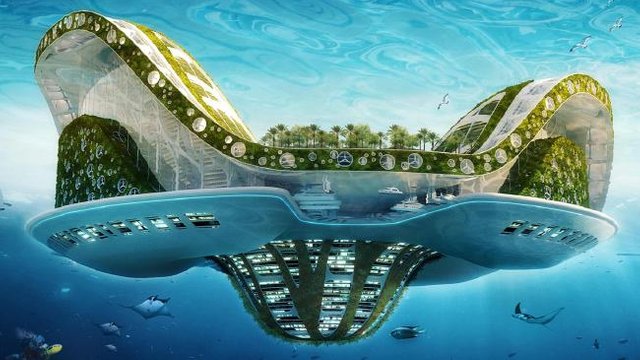
If you google image search "seasteading" you'll see all manner of imaginative, architecturally beautiful concepts for floating communities at sea. Probably you've already seen the cover picture I used for this article in some piece breathlessly exclaiming that such structures are on the verge of being built. Sadly, that's not the case. The reality is...somewhat less glamorous.
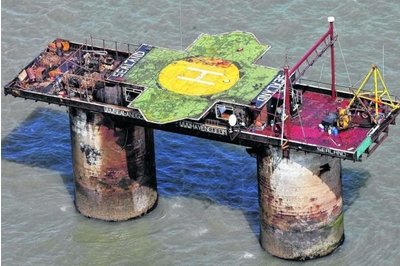
Everybody remotely interested in seasteading knows about the Principality of Sealand. However many don't realize that since it was devastated by a fire, it's uninhabited most of the time. There's also just not much there to compel anybody to make it their permanent home. It's more of an oddity and a punchline than a viable oceanic colony.
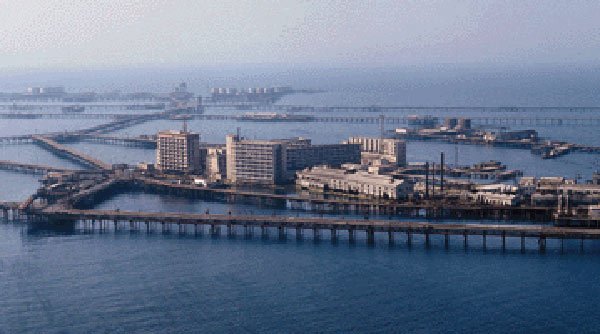
The Soviets built an actual city in the open ocean they named "Oil Stones". It did not float but was mounted to concrete supports that went down to the seabed. To my knowledge this is the only actual city that has ever been built out to sea (roughly 26 miles from shore) and for the express purpose of supporting the immense crew involved in oil extraction on-site. Because they brought their families, this was no simple industrial base. It had a school, it had a hospital, a grocery store, everything you'd expect.
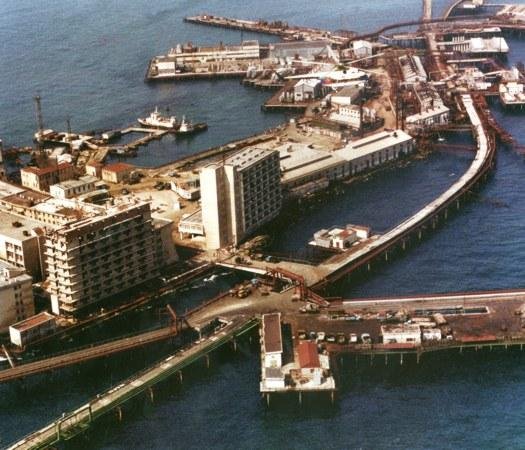
However these days we've devised more efficient ways of getting at seafloor oil with smaller crews, from floating oil rigs. Which is sort of a shame as that's one of the only sufficiently profitable activities to drive the creation of whole cities out to sea. There are companies who have found what they believe to be equally effective business models for seasteading in the modern era though, more on that in a bit.
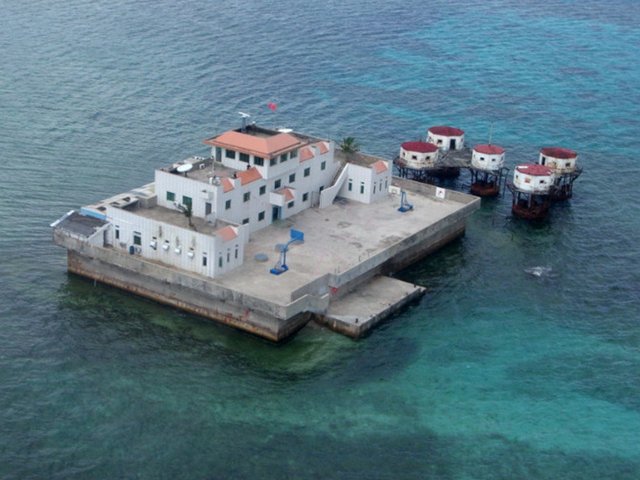
When I say seasteads, I do not mean naval bases like the one shown above. There are numerous utilitarian structures out to sea, but none of them are intended as real communities for regular civilian families to inhabit. I also don't count temporary structures, individual houseboats (however expansive) or anything moored to land.
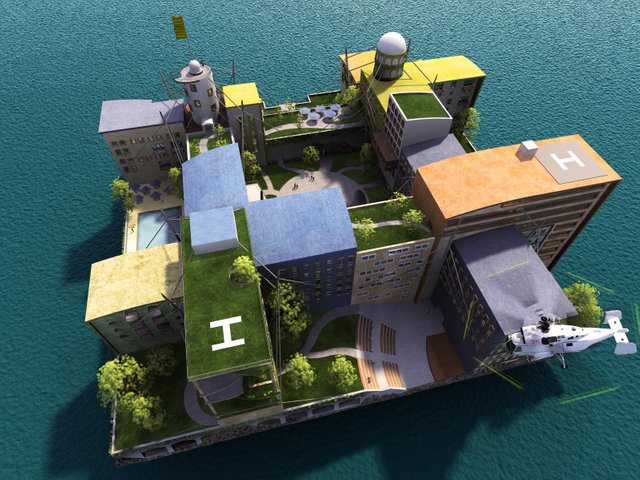
The Seasteading Institute is fond of posting exciting renders like the one you see above. However, apart from Ephemerisle they've not yet actually built anything. Lots of talk, but no hardware in the water as of this writing. Project Blueseed has come much further. Initially they wanted to build their seastead on a repainted barge, as seen below:
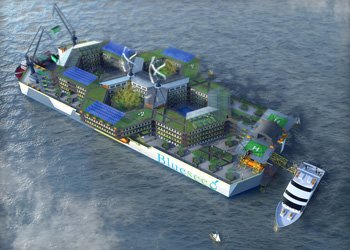
However economic realities set in pretty quickly. Why custom build a floating settlement when, for vastly cheaper, you can buy one pre-built? I speak of cruise ships. Many seastead illustrations are laughably wasteful: A couple of buildings on a huge floating platform, the rest of the space essentially unused. Given the high cost of floating real estate, wouldn't it be better if the whole thing were one huge floating building? Which is what cruise ships already are.
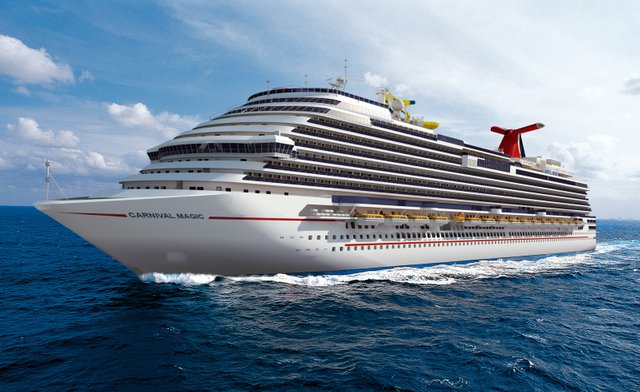
The market has already decided what the most cost efficient floating ocean colony looks like. It's less sexy and glamorous than the floating city block renders we commonly see, but that's just taking land based city design and transplanting it to the ocean. Like how Jules Verne thought airships would just be nautical vessels suspended from dirigible gas bags. A total rethink of human living space is needed for the open ocean environment, but the hard work's already been done by the cruise industry.
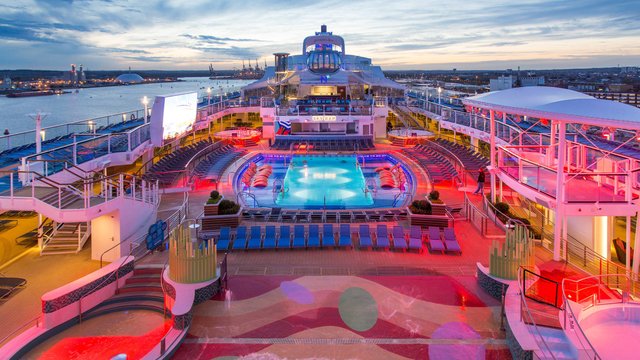
Cruise ships are densely packed, but rather nice places to live compared to any given city. The shared space is no longer ugly concrete and asphalt but lovely ornate, luxurious pavilions. The main thoroughfare is often something like a street from a little European town crossed with an airport or a shopping mall, with layers of apartment windows overlooking shops down at street level.
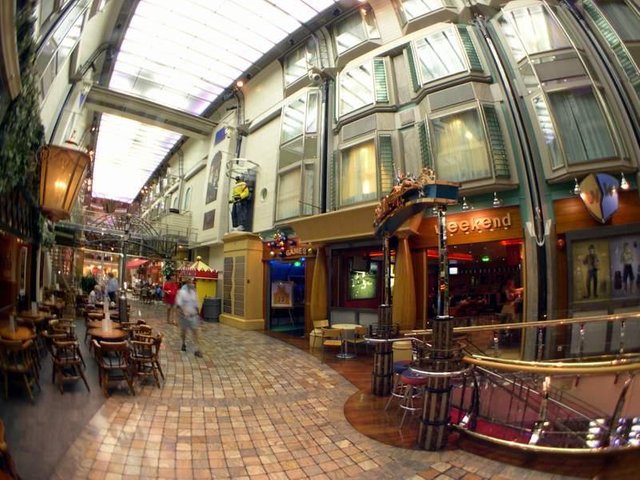
In what way is this not more desirable living space than any urban environment you've ever seen? A little cramped, but that's a small price to pay. It may not be quite this nice, as to make the scheme affordable, Blueseed will be purchasing and then repurposing after-market cruise ships from a decade or more ago, but it will still be a good deal more luxurious than the average person is used to as a permanent dwelling.
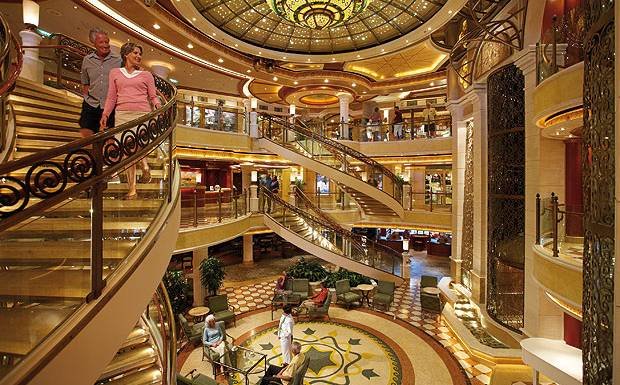
Blue Seed has already accumulated the investor money needed and is in the process of selecting a vessel. It will then have the vessel refitted in certain ways to support long duration stationary use. This will include things like a larger septic tank, replacing the fuel tank with a fresh water tank, solar panels, wind turbines, a clinic, a grocery store, etc. Other than that, a cruise ship already has pretty much everything a large population of humans living at sea would need, for obvious reasons.
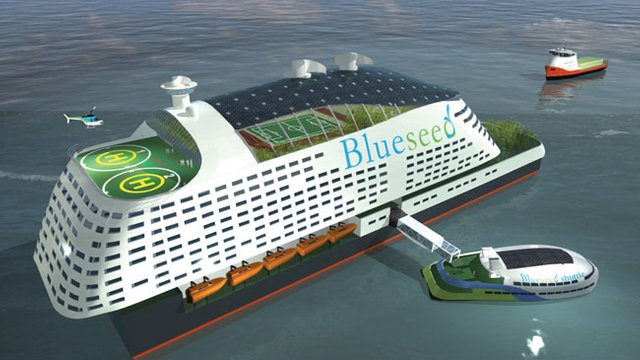
Blue Seed's business model entails establishing a floating office park/corporate campus where Silicon Valley entrepeneurs can meet with visiting Chinese engineers, without the latter having to jump through the expensive and tedious beaurocratic hoops usually involved in visiting the US. This will facilitate faster, cheaper collaboration, which gets the product to market quicker and with less overhead expense.
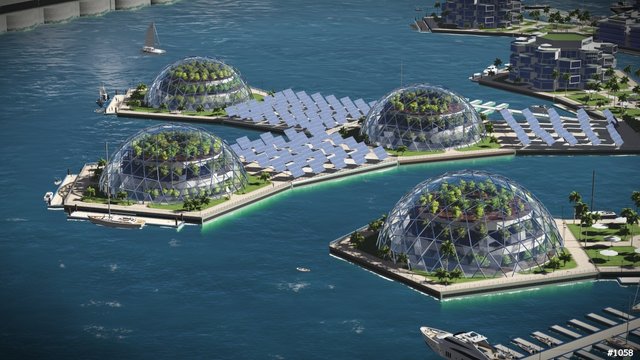
"But I wanted seasteads like in the picture above! All shiny and futuristic, not some modified cruise ship!" Sorry buddy, economics rules. When the new Orion space capsule debuted, many voices complained that it superficially looked like a step backwards compared to the Space Shuttle. But the Space Shuttle was a bloated beaurocratic boondoggle. A return to capsules was a return to pragmatism. Same deal here. Cruise ships already exist. They already work, and used ones can be had for vastly less money than a custom built structure.

The choice isn't repurposed cruise ships or custom futuristic floating cities. It's repurposed cruise ships or nothing. Blue Seed has found the only solution so far that the market will bear. They've got the business model that makes it profitable, but only because used cruise ships have already paid for themselves many times over back when they carried tourists. Will the success of Blue Seed eventually create a market for floating settlements that can support more advanced seasteads, like the ones we keep seeing ambitious renders of?
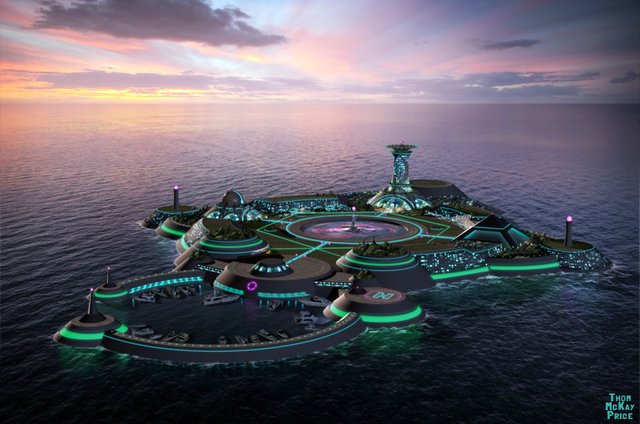
Could be. But really, it's cool enough that seasteads will be a real thing soon, even if it's just a retooled cruise ship. And you have to be seriously lacking in perspective to look at the inside of a cruise ship and feel disappointed. If the day comes that, thanks to Blue Seed, it becomes affordable for middle class families to live full time on cruise ships...that's a future I can live with.
I did hear back in 2013 that they were planning to anchor ships just outside US waters, near San Francisco, to allow IT engineers to work there without having to have a H1B visa.
But if your engineer isn't onshore wouldn't it be easier to have him work in India and telecommute?
Also what happens if there is trouble? The Pacific is a ring of fire, with regular tsunamis rolling across etc. I suppose the ship could up anchor and try to sail away from trouble if they got enough notice, but what if the earthquake is on the American side of the Pacific?
I have actually been thinking a lot about this the last few years. My current Idea is why not:
Build and sell Luxury Yachts (Mini Cruise Ships) that are Catamarans and sit way above the water with a square Cabin. The cabin could be built almost like a submarine with a pressurized cabin and connections on all 4 sides.
The thinking behind this is if things got really bad everyone who owned one of these ships could meet somewhere in the open ocean and they could all interconnect together to form a city with an absolutely massive flat surface on top for landing airplanes or helicopters and because all the ships are built on Catamarans there is docking available all the way around for smaller boats, subs, ships, etc.
If these ships were also fully self-sufficient and required no Fossil Fuels (grew their own food, used all electric power from solar, wind, hydro) and had ample desalinization units on board they could literally survive on the ocean indefinitely without ever stepping foot on land. They could grow their own fruits, vegetables, herbs and spices; reclaim salt from the desalinization units for seasoning and preserving foods and catch all manner of sea life for additional food.
Whenever I see stuff in the news about futuristic architecture / transport systems / etc, with only glamorous concept art to back it up, I always feel a bit skeptical while wishing at the same time that I'll live long enough to see it become reality. Blue Seed, on the other hand, sounds like they actually have a realistic vision. Taking a long cruise is high up on my list of things to do before I die, and I've always thought it would be awesome to live permanently on a cruise ship. Although I don't think I'd want it to put down roots and stay planted in one place for long periods of time. I'd love to live on a ship that's always traveling somewhere, so I can see new places and have new experiences all the time.
You can do that. There's one cruise ship which today allows people to permanently reside onboard.
Thanks for the link. I think I came across that somewhere before in some news story, but couldn't remember exactly what it was. Ah, a guy can dream!
Years back, I picked up this book called The Millennial Project: Colonizing the Galaxy in Eight Easy Steps, and the first chapter was about seasteading. Coolest book I'd ever seen. The seasteading updates were awesome. I upvoted the content and will be featuring it on my daily hidden gems blog. Look forward to hearing more from you.
I have that same book. The most interesting part to me was farming algae as a source of cheap protein.
I thought the spirulina farming was cool (though green bread was a bit odd to me), but it was the concept of seacrete to have calcium depose o electrodes and actually "grow" concrete structures that absolutely grabbed my imagination. I have been hoping to hear about this becoming a reality for such a long time. I am very optimistic about Blueseed and their approach to seasteading. I'd be curious to see if a hot war in the Sea of China changes anything. Hopefully it remains a curiosity.
I read that book. I thought it was very interesting. This was in the time before the age of the internet and finding more information was very difficult. (I particularly liked the Magnus Airship)
The UN extended the maritime borderline to 24 miles and the economic zone to 200 miles,and will soon take over the oceans and "regulate it".
I think Seasteading wont help us, the government is out of control. Only colonizing other planets will help us get away from them. The Universe is just too big for them to put their dirty hands on.
This was a thing on Reddit a few years ago. The Ents wanted to build their own floating country to grow herb legally, the7 decided on buying about 4 VLCC supertankers and coupling them together. The big problems were providing enough energy to power a desalination plant and disposal of effluent. Its a LOT of work and unbelievably expensive to do this.
it totally shouldn't be hard to put 6 cruiseships
bow-to-bow, and make a starshaped thing that floats & has propulsion.
connect them with ropes & beams, those big inflatable cushions between them,
build a geodetic cuppola on top, hangin gardens in between...
They could 'mine' plastics, like Boyan Slat's Ocean Cleanup :
The website linked in the article is to a Mussel research project and hasn't been updated since 2007, the actual website for Blue Seed linked on Wikipedia is defunct and doesn't work (though Wikipedia does indicate that the people in charge of the project were planning on collecting taxes from residents on behalf of their countries of origin), the entire project hinged on the passing of Congressional visa bill, and the last status update showed them $30 million short in funding as of three years ago.
If their business model is profitable, why are they short of funding? Why is their website no longer up? Why hasn't anyone heard anything about them since 2013?
This information isn't current, nor does it have anything to do with anarchism.
The ability to attract investment dollars is not necessarily reflective of the viability of their business model. Investors are human.
But, muh future.
How about sovereignty though? I don't think a ship can claim for international recognition as an independent nation. At most it can opt for being unregistered, but then it can be bullied by any nation. Say some guy onboard launches some very disruptive crypto project or leaks top secret data or hack into a 3-letter agency, the USA can send a squad to ransack the ship and capture the dude without any diplomatic consequence. Surely that is a likely scenario given that the USA already do that in countries where they have no business getting involved. What good leaving in a seastead then if it doesn't even put you out for reach from the evil empire?
Blue Seed plans to anchor just 12 miles off the West coast. I've never heard of piracy occurring that close to the mainland. It is exactly far enough to escape certain laws however.
isn't .Gov control/jurisdiction like 50? mi. offshore ?
There are different limits with different associated legal nuances to them. I think you need to go 200 miles out to escape US jurisdiction entirely.
I think you need to leave the planet to escape US jurisdiction entirely :)
Indeed, I was confused when I first wrote 150 mi. (Then changed to 50 mi.) then i was like OH yeah (IDK!) , is a clusterfuck/stop researching jurisdiction limits !, (years ago)
Where is anyone out of reach of the evil empire?
One thing you have to keep in mind is that a traditional seastead also doesn't put you out of reach of the 'evil empires'. Large goverments have few compunctions about invading smaller nations when it's to their benefit. The first seasteads will either have to be extremely militarily advanced while not instigating at all (think porcupine, and read The Transhumanist Wager for an example of one) or else have strong alliances (and therefore restrictions) with nearby nations.